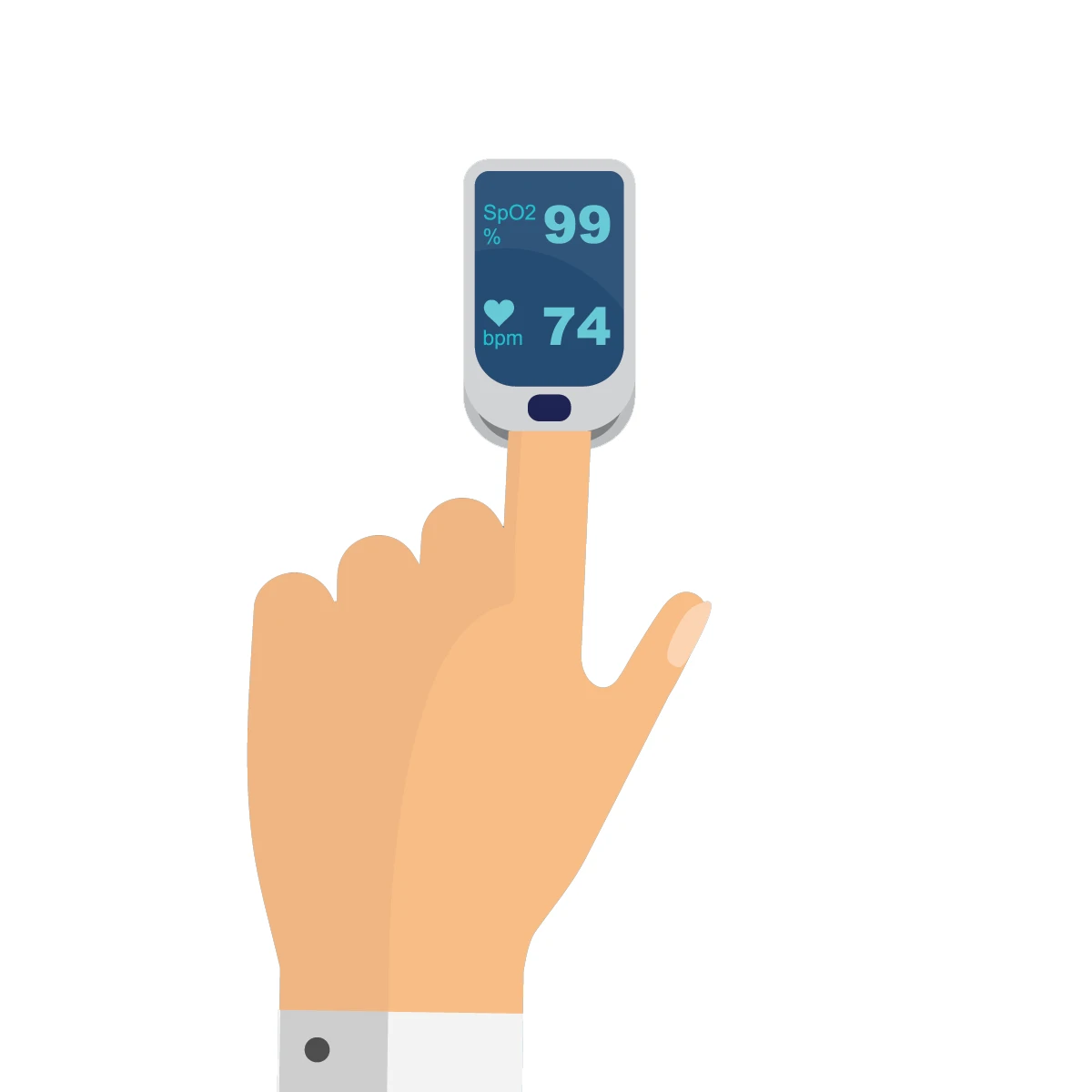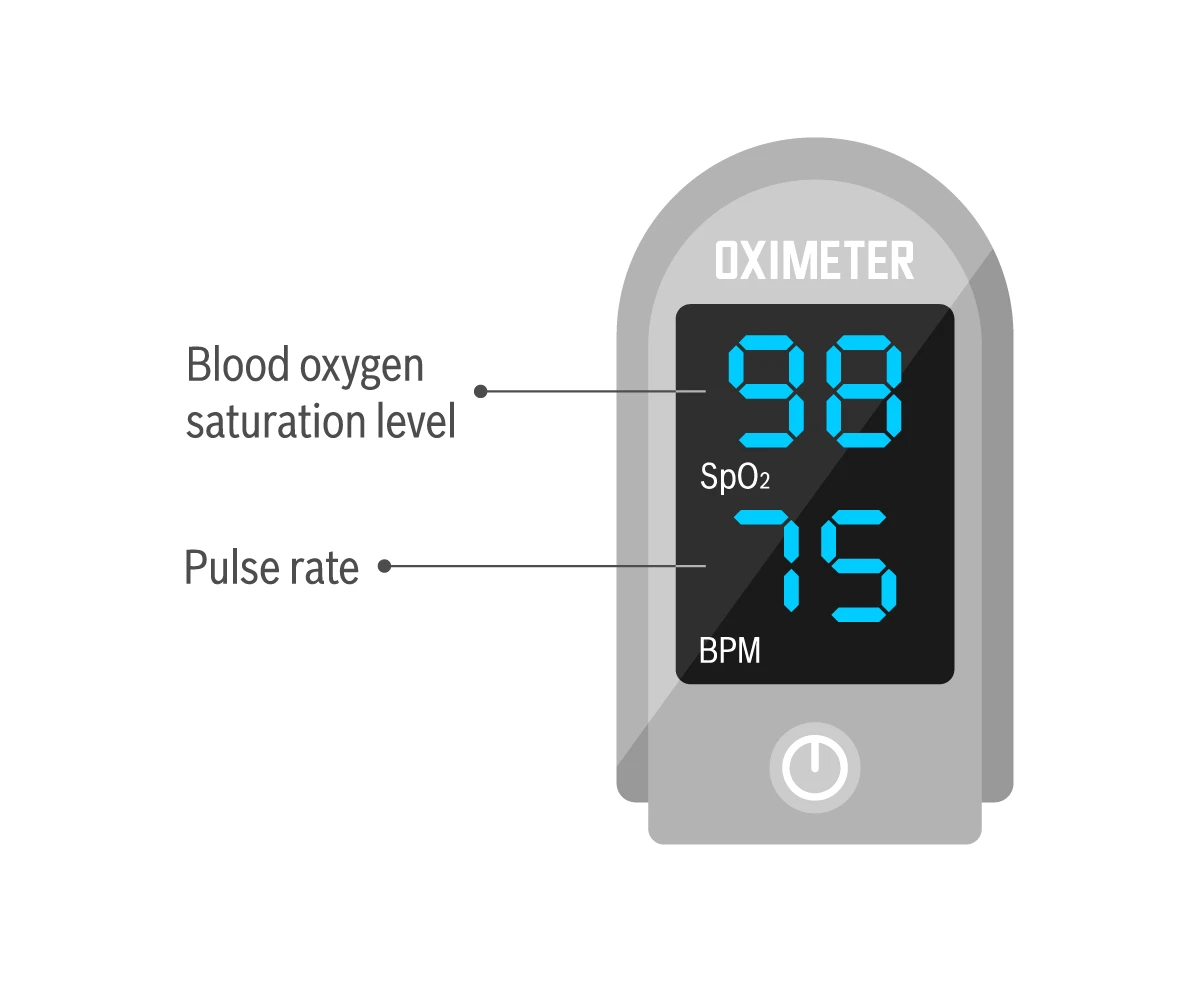What is pulse oximetry?
Pulse oximetry is a noninvasive test that measures the amount of oxygen saturation in your blood. Your blood oxygen saturation level is an indicator of how well your lungs and heart are functioning. When the amount of oxygen saturation in your blood lowers, your body doesn’t function as it should.
Chronic lung and heart conditions can put you at risk of hypoxemia (low blood oxygen saturation), which can be life-threatening. If you have a lung or heart condition, your doctor may recommend oxygen saturation monitoring at home with a portable pulse oximeter device.
Understanding blood oxygen saturation
Your red blood cells contain a specific balance of oxygen. Your lungs carry these oxygenated cells all around your body. To find your blood oxygen saturation level, pulse oximetry tests compare the percentage of oxygenated cells to deoxygenated cells in your blood.
How pulse oximetry works

A pulse oximeter has a sensor that uses red and infrared light. The cold, painless light rapidly measures the percentage of oxygen in your blood. It is commonly placed on your finger with a gentle clamp.
The amount of oxygen in your tissues will affect how well it absorbs the light from the pulse oximeter. Within seconds, the device calculates your saturation levels by analyzing how much light passes through your tissue.
Benefits of pulse oximetry
Tracking your blood oxygen saturation levels with a pulse oximeter at home helps alert you if you need medical intervention. It also helps your doctor know if your treatments – such as supplemental oxygen or medication – are working best for you.
Who needs oxygen saturation monitoring?
Pulse oximeters are commonly used by pulmonologists, cardiologists, during physical exams and in urgent care settings. The test can help identify a critical condition such as cardiac arrest.
It’s important to track your oxygen saturation levels at home if you have a heart or lung condition. Pulse oximeters may be purchased over-the counter or prescribed by your doctor.
Pulse oximetry is beneficial for those with conditions such as:
- Chronic obstructive pulmonary disease (COPD)
- Pneumonia
- Acute respiratory distress syndrome (ARDS)
- Heart failure
- Asthma
- Lung cancer
- Anemia
How to use a pulse oximeter
Your pulse oximeter will come with instructions that are important to follow. To get the most accurate reading, it helps to follow the below tips:
- Remove any jewelry on your fingers
- Remove nail polish or false nails
- Rest at least five minutes before you use the pulse oximeter
- Warm your hands to room temperature
- Place your hand below your heart level
- Clip your pulse oximeter to your middle or index finger
- Hold still and switch your pulse oximeter on, following your device’s instructions

Interpreting pulse oximetry readings
Your pulse oximeter will display your blood oxygen saturation level number and your pulse rate. It’s recommended that you take your readings several times and record the average result.
Typically, a normal oxygen saturation range is between 95-100%. Ask your doctor what saturation level and pulse rate you should be experiencing.
Contact your doctor if you are experiencing signs of hypoxemia or have concerning readings.
Symptoms of hypoxemia
Depending on the severity and duration, hypoxemia can be life-threatening.
Symptoms of hypoxemia include:
- Difficulty breathing or shortness of breath
- Rapid breathing or heart rate
- Bluish skin
- Headache
- Confusion
- Anxiety
- Restlessness
How accurate are pulse oximeters?
Results from pulse oximeters are usually precise, but some factors may impact your results. The Food and Drug Administration found in February 2021 that you might have inconsistent readings if you have:
- Dark skin pigmentation
- Thick skin
- Poor circulation
Get care
We help you live well. And we’re here for you in person and online.
